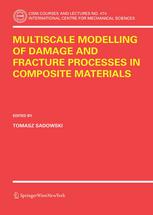

Most ebook files are in PDF format, so you can easily read them using various software such as Foxit Reader or directly on the Google Chrome browser.
Some ebook files are released by publishers in other formats such as .awz, .mobi, .epub, .fb2, etc. You may need to install specific software to read these formats on mobile/PC, such as Calibre.
Please read the tutorial at this link: https://ebookbell.com/faq
We offer FREE conversion to the popular formats you request; however, this may take some time. Therefore, right after payment, please email us, and we will try to provide the service as quickly as possible.
For some exceptional file formats or broken links (if any), please refrain from opening any disputes. Instead, email us first, and we will try to assist within a maximum of 6 hours.
EbookBell Team

4.3
28 reviewsVarious types of composites are used in engineering practice. The most important are fibrous compositesy laminates and materials with a more complicated geometry of reinforcement in the form of short fibres and particles of various properties^ shapes and sizes. The aim of course was to understand the basic principles of damage growth and fracture processes in ceramic, polymer and metal matrix composites. Nowadays, it is widely recognized that important macroscopic properties like the macroscopic stiffness and strength, are governed by processes that occur at one to several scales below the level of observation. Understanding how these processes infiuence the reduction of stiffness and strength is essential for the analysis of existing and the design of improved composite materials. The study of how these various length scales can be linked together or taken into account simultaneously is particular attractive for composite materials, since they have a well-defined structure at the micro and meso-levels. Moreover, the microstructural and mesostructural levels are well-defined: the microstructural level can be associated with small particles or fibres, while the individual laminae can be indentified at the mesoscopic level. For this reason, advances in multiscale modelling and analysis made here, pertain directly to classes of materials which either have a range of relevant microstructural scales, such as metals, or do not have a very we- defined microstructure, e.g. cementitious composites. In particular, the fracture mechanics and optimization techniques for the design of polymer composite laminates against the delamination type of failure was discussed.